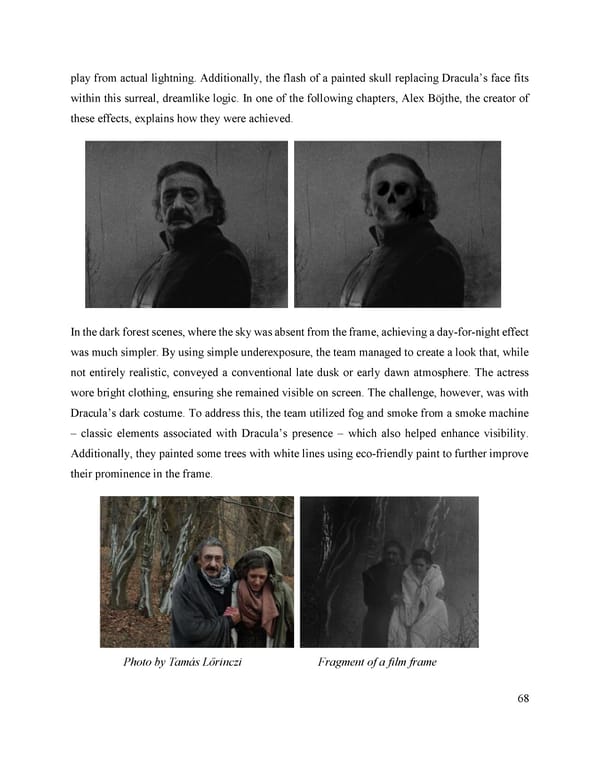play from actual lightning. Additionally, the flash of a painted skull replacing Dracula’s face fits within this surreal, dreamlike logic. In one of the following chapters, Alex Böjthe, the creator of these effects, explains how they were achieved. In the dark forest scenes, where the sky was absent from the frame, achieving a day-for-night effect was much simpler. By using simple underexposure, the team managed to create a look that, while not entirely realistic, conveyed a conventional late dusk or early dawn atmosphere. The actress wore bright clothing, ensuring she remained visible on screen. The challenge, however, was with Dracula’s dark costume. To address this, the team utilized fog and smoke from a smoke machine – classic elements associated with Dracula’s presence – which also helped enhance visibility. Additionally, they painted some trees with white lines using eco-friendly paint to further improve their prominence in the frame. Photo by Tamás Lőrinczi Fragment of a film frame 68
 Lost Analogue: Exploring Film, Music, and Interdisciplinary Methods in Education Page 68 Page 70
Lost Analogue: Exploring Film, Music, and Interdisciplinary Methods in Education Page 68 Page 70